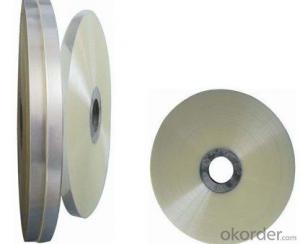XPS Extruded Polystyrene Board: A Comprehensive Guide
Hey there! Welcome to the fascinating world of XPS extruded polystyrene boards. I’m super excited to share with you everything you need to know about these versatile and efficient insulation materials. Whether you’re a DIY enthusiast, a construction pro, or just curious about the latest in building materials, you’ve come to the right place. So, let’s dive right in and explore the ins and outs of XPS boards, their benefits, applications, and how to work with them.
What Are XPS Boards?
XPS stands for Extruded Polystyrene, which is a type of thermoplastic material. It’s made from polystyrene, a common plastic, but with a unique extrusion process that gives it amazing properties. These boards are rigid, closed-cell foams that provide excellent thermal insulation. They’re lightweight, durable, and have a low thermal conductivity, making them perfect for a wide range of applications.
The Science Behind XPS Boards
Ever wondered how XPS boards achieve such impressive insulation? It’s all about the cell structure. The closed-cell structure of XPS means that the cells within the material are completely enclosed, trapping air and creating a barrier against heat transfer. This is what gives XPS boards their exceptional R-value, a measure of thermal resistance. The higher the R-value, the better the insulation.
Benefits of Using XPS Boards
When it comes to insulation, XPS boards are the real deal. Here are just a few reasons why you might want to consider them for your next project:
– Thermal Efficiency: XPS boards are top-notch when it comes to keeping the heat in or out, depending on what you need.
– Moisture Resistance: They don’t absorb water, which means they won’t degrade over time due to damp conditions.
– Durability: These boards are tough and can withstand a lot of wear and tear.
– Lightweight: Easy to handle and install, even for those without a background in construction.
– Versatility: Use them for walls, roofs, floors, and more. The possibilities are endless!
– Eco-Friendly: Made from recyclable materials and contributing to energy efficiency, XPS boards are a green choice.
Applications of XPS Boards
XPS boards are like the Swiss Army knife of insulation materials. They can be used in a variety of applications, including:
– Residential Construction: Keep your home cozy and energy-efficient.
– Commercial Buildings: Ensure comfort and reduce energy bills in offices, malls, and more.
– Cold Storage Facilities: Maintain low temperatures in warehouses and storage units.
– Outdoor Applications: Use them for landscaping, pool insulation, and even as a base for garden paths.
– Roofing: Provide an extra layer of insulation and protection from the elements.
– Flooring: Offer a warm and quiet underfoot experience.
How to Install XPS Boards
Now that you know all about XPS boards, let’s talk about how to put them to work. Here’s a simple guide to get you started:
1. Measure and Plan: Determine the area you need to cover and plan the layout of your boards.
2. Prepare the Surface: Make sure the surface is clean, dry, and free of any debris.
3. Cut the Boards: Use a utility knife or a saw designed for foam materials to cut the boards to size.
4. Apply Adhesive: If necessary, use an adhesive suitable for XPS boards to secure them in place.
5. Install the Boards: Start from one corner and work your way across, ensuring a tight fit.
6. Seal the Joints: Use a sealant to seal any gaps between the boards for maximum insulation.
7. Finish the Job: Depending on your project, you may need to add a vapor barrier, drywall, or another finishing material.
Maintenance and Troubleshooting
Proper care and maintenance will ensure your XPS boards continue to perform at their best. Here are a few tips:
– Regular Inspections: Check for any signs of damage or wear.
– Clean Gently: If your boards get dirty, clean them with a soft cloth and mild detergent.
– Avoid Sharp Objects: Keep sharp objects away from the boards to prevent punctures or tears.
– Repair Promptly: If you notice any damage, repair it as soon as possible to maintain insulation quality.
The Future of XPS Boards
As we look to the future, XPS boards are poised to play an even bigger role in construction and insulation. With advancements in technology and a growing focus on sustainability, these boards are only going to become more efficient and versatile.
Wrapping Up
I hope this guide has given you a comprehensive understanding of XPS extruded polystyrene boards. From their science and benefits to applications and installation tips, we’ve covered a lot of ground. If you’re ready to take the next step in your insulation journey, XPS boards might just be the perfect solution for you. Remember, when it comes to insulation, it’s all about finding the right fit for your needs. Happy building!

